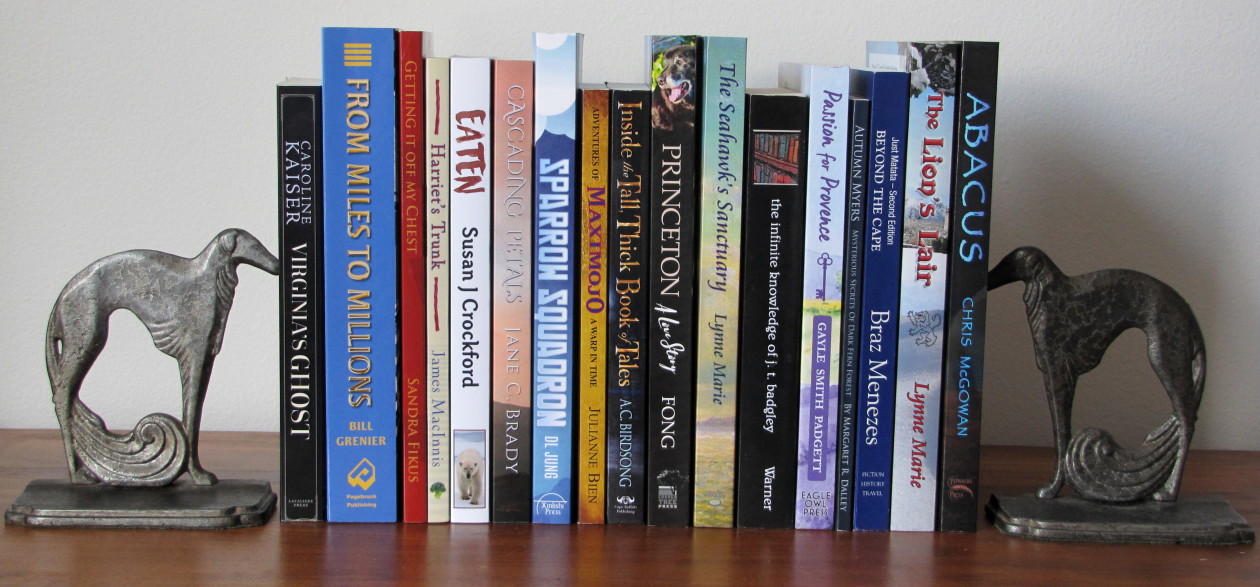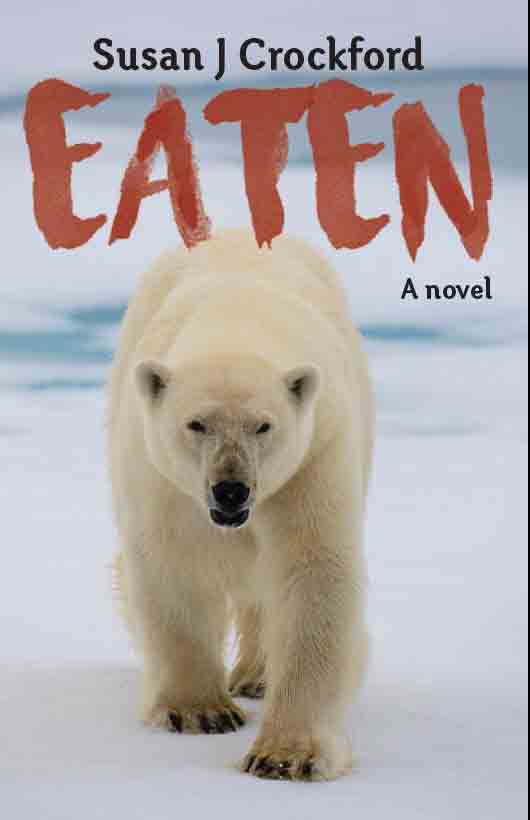Polar bears may look adorable and cuddly on greeting cards, but as I learned from reading Susan J. Crockford’s debut novel Eaten, you really don’t want to encounter one of these fearsome predators in the wild. In the book, Crockford, who is a polar bear scientist, explores a frightening scenario: an invasion of the bears in the remote outports of northern Newfoundland. Recently, I spoke to Susan about her book.
CK: Eaten is a unique thriller liberally laced with polar bear science. What sort of reader did you write the book for?
SC: I wrote the book for people who love a good story first and foremost but who don’t mind learning a thing or two in the process. I was aiming for a thriller that would give people nightmares–and I believe I succeeded. The prospect of a bear attack fascinates people because it’s one of those primal fears. Animal predators (like bears, big cats, and wolves) still kill unarmed people every year, as they have done for hundreds of thousands of years. Eaten taps into that primal fear and shows that even in the 21st century, we will not necessarily be safe from carnivorous predators.
CK: Your novel takes place in 2025 in Newfoundland, where ravenous bears are killing and eating humans. How likely do you think it is that this dire scenario could come true, and what would cause it?
SC: Based on my knowledge of seals, bears, and sea ice, I imagined where, when, and why polar bears might be forced ashore by hunger to prey effectively on humans. That dictated the location, the year, and the season of the story. Could it happen? Absolutely. Will it happen? Not unless all of the variables fall into place as I’ve described: if only some do but not others, there would be another outcome. Two of the variables are very high population numbers of harp seals (already achieved) and of polar bears (in progress).
CK: You’re a professional zoologist who’s studied polar bear ecology and evolution for more than twenty years. You also blog about polar bears. You know these beasts inside out, in a way few of us ever can. As your book pointed out, many people have misconceptions about them. What would you most like people to know about polar bears?
SC: That late winter through spring (March to June) is the most critical to polar bear survival because this is when the bears feed intensively on young Arctic seals. Polar bears eat eight months’ worth of food during this time. After months without food over the winter, bears are at their leanest and hungriest in early spring and this makes them especially dangerous predators at that time because they are highly motivated to find the food they need. See this recent blog post, Hungry polar bear attacks: Why my novel “Eaten” is set in early March.
CK: Turning from science writing to fiction seems like quite a leap. What was your impetus for writing Eaten, and what was the process like for you?
SC: I come from a family of storytellers and I think that helped considerably. When I found myself in a position where I could do nothing but write for several months, my original thought was to turn my polar bear blog posts into a science book. But then it occurred to me that a more valuable contribution would be to write something for people who would never read a science book. I realized that a good fictional story based on science might be far more popular and inform a wider audience than another dry science tome (however well written it might be).
I enjoyed writing this story more than I expected and found it was not as hard to switch genres as I’d feared. It was comforting to know that a good fiction editor could help me over the transition, especially in writing dialogue and getting point of view consistent. I knew I’d need that help and budgeted for it, which gave me the confidence to just write. My sister, who’s an avid fiction reader, gave me some useful feedback on the first few drafts but after that, I was off. In the end, the professional editorial help made a huge difference and was worth every penny.
CK: Will you be writing more fiction, and if so, what do have planned?
SC: Oh yes, I’m hooked on fiction! I don’t think I’m done with Newfoundland polar bears quite yet. As well, other ideas just keep bubbling away in my brain, so I write them down as they come to me, hoping one of them might play out into a future story.
CK: You’ve just been through the self-publishing process with Eaten. Do you have any advice for writers who are contemplating self-publishing?
SC: I’ve actually done it twice now–once for a science book about evolution, Rhythms of Life: Thyroid Hormone and the Origin of Species, that got quiet rave reviews but didn’t sell particularly well (although probably better than other self-published books in that genre). I may have just covered the cost of publishing that book but certainly not enough to reimburse myself for the time it took me to write it. That was disappointing but probably predictable.
I’m hoping a fiction book might be more popular and a better seller. As a virgin fiction author, I had virtually no hope of finding an agent to represent me to a conventional publisher, so I didn’t waste my time looking. Self-publishing takes more author-generated marketing effort, but I knew that going into this project. Having the blog already established has given me a bit of a leg up, not just because of the people who read the blog but the people I’ve met over the last three years who will help get sales going. Time will tell but early sales are encouraging. So I guess if I had one piece of advice, that might be it: have a solid, on-line presence before you start, so that you can use it to help get early sales going.
Eaten is available at Amazon.com. Also see the book trailer, Susan’s blog, Polar Bear Science, and her website.


 Follow
Follow